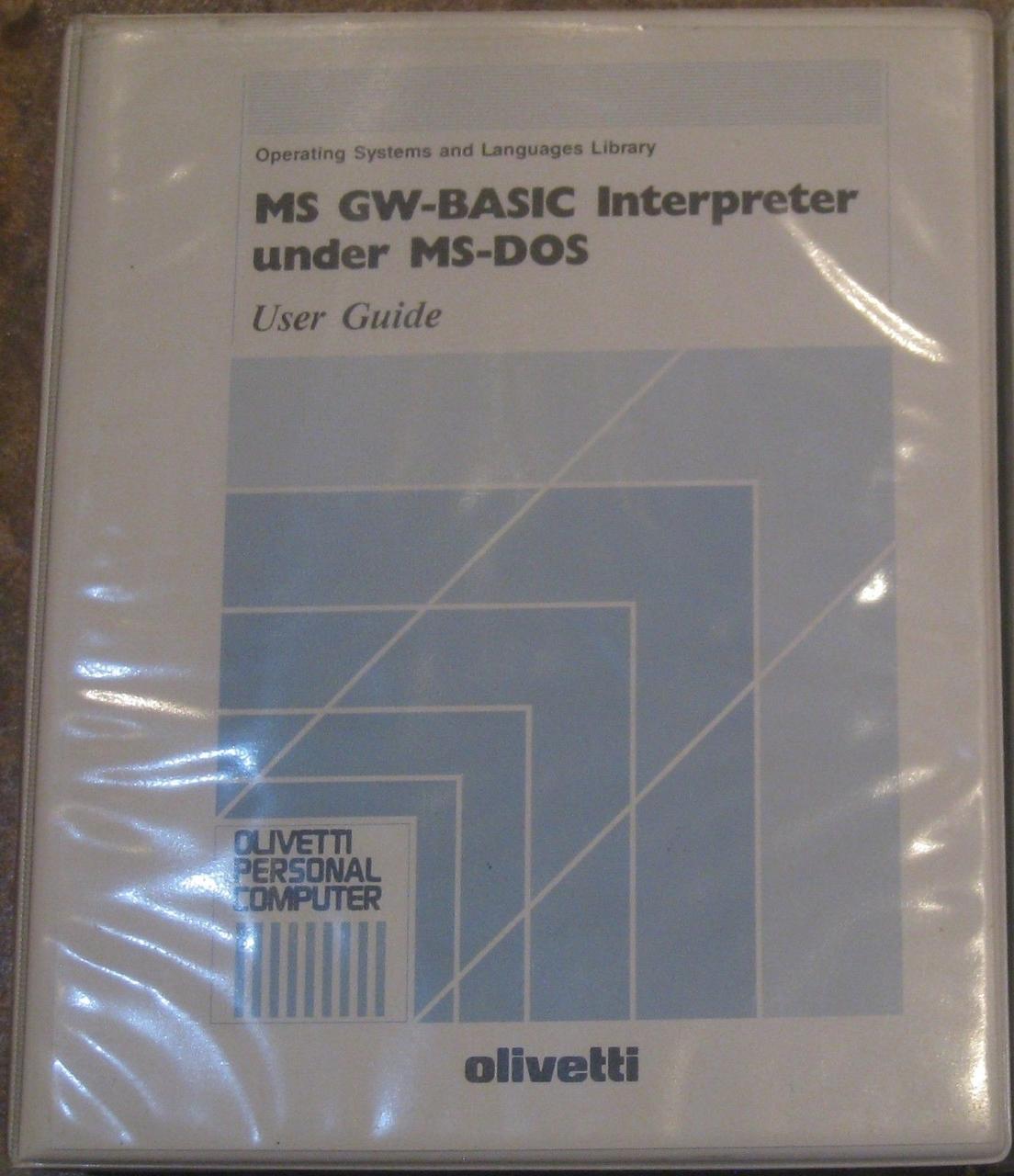Software developers use software frameworks all the time, so it's good to think
about them. You might even create one yourself, but even if you don't,
understanding the design principles underlying them helps you evaluate and use
frameworks better.
A few years ago I wrote a post about patterns I've seen in frameworks. In
it, while I did discuss other languages, I mostly used examples from the Python
world. This is a revised version that focuses on frameworks written in
JavaScript or TypeScript.
Let's give some examples of frameworks: well-known frameworks in the JS world
include React, Express, NextJS and Jest. Frameworks are not all about solving
the same problem and do not have to cover all aspects of your application -
Jest for instance is focused on letting you write tests, but doesn't care about
how you compose web pages.
Framework versus library
So what distinguishes a framework from a normal software library? You install
both from npm, right? They all have a package.json.
You can see a software framework as a library that calls your application code
instead of the other way around. This is known as the "Hollywood Principle":
"Don't call us, we'll call you".
So whereas you can make a HTTP GET request using axios by calling the
get function it exposes, you give a framework like NextJS functions and
components to call, and it calls them. React lets you define functions that it
then lets you combine in a tree, and React itself takes care of re-rendering
parts of the tree and updating the browser when state changes.
Many libraries have aspects of frameworks so there is a gray area.
It's often claimed about React that it's "just a library", not a framework, but
given that it presents a declarative way to structure UI for your applications
including a special approach to state management, with support for both web UIs
as well as native UIs, I certainly see it as a (micro) framework.
Frameworks make applications more declarative
The framework defines the grammar: framework-provided functions, objects,
classes, types. Then you use that grammar by bringing some of the words:
application-defined functions, objects, classes, types and config.
The grammar provides an organizing principle for your application, or at least
parts of your application. A framework helps structure the way you write code,
making it more declarative. Declarative code is code that says what it wants,
not how to do it. Declarative code has less noise and tends to be easier to
understand and adjust. Especially as a codebase grows over time, declarative
patterns become more important to keep it manageable. Frameworks help you do
that.
NextJs for instance makes your application more declarative in how particular
pages match routes: you declare these by placing files with the names of these
pages in a directory structure. This means that a developer new to a project
can quickly see what pages exist and what code is used to render them, and
easily add new pages as well.
Frameworks restrict
As developers our intuition may be that we want to use the tool with the least
restrictions, so we get ultimate power and flexibility. Frameworks however do
the opposite of that: they restrict what you can do. They force you to use it
in a certain way, and if you step out of that, expect pain or the framework
breaking. In return for following these restrictions, the framework gives you
access to its powers.
This is quite similar to why we use programming languages. If ultimate power
and flexibility was all that we wanted in software development, we'd all be
using assembly language - it lets you exactly control which instructions are
executed, and you can use memory in whatever way you want. It turns out that is
very difficult to manage and understand, so instead we use higher level
languages to help us do that.
An example of a restriction in React is how state is managed. Here's some
BROKEN code that breaks that restriction:
import React from "react";
const myState = { value: 0 };
const Foo = ({}) => {
const handleClick = () => {
myState.value = 5; // Don't do that!
};
return <button onClick={handleClick}>{myState.value}</button>;
};
Here we manage state as a global object. When we click on a button, we modify
that global state. But that doesn't do what we want: React does not notice this
change, and the UI doesn't update with the new value after we click the button.
Let's fix that:
import React, { useState } from "react";
const Foo = ({}) => {
const [value, setValue] = useState(0);
const handleClick = () => {
setValue(5);
};
return <p>{value}</p>;
};
Here we follow the restrictions of React: we manage state using its built-in
useState hook. Because React restricts you in this way, React can now
automatically re-render the component whenever there is a state change. That's
the power the framework gives you, but you do have to buy into its
restrictions.
Mega frameworks, micro frameworks
Mega frameworks are frameworks that aim to solve a large range of problems
during application development. Famous examples in the web space are Rails and
Django: problems solved span from UI in template rendering to interacting with
the database through an ORM. When you deal with an application written with
that framework you can expect the organizing principles of the framework to
reach far into its code base. A newcomer to such a framework benefits by having
to just look at one integrated source for solutions.
In the JS world mega frameworks are less common. Vue goes further than React
in what it covers as a frontend framework: it has an official router and state
management solution whereas React does not. But Vue nonetheless restricts
itself to the frontend. NextJS also offers integration and supports server-side
use cases, but is still focused on the UI part of the story.
Micro frameworks aim to solve one problem well. Examples of these are plenty in
the JavaScript world: Express for programming an HTTP server, and React for
managing a UI. The benefit of such frameworks is that an application
development team is not locked into the framework so much and can adopt a
collection of high-quality frameworks from a whole ecosystem. That's also its
drawback: it takes effort to collect and maintain these.
A mega framework can be constructed from scratch, like Django or Rails
historically were. You can also assembly a mega framework out of a selection of
micro frameworks.
Whatever the size and scope of the framework, you can find patterns in them.
Configuration
So in a framework, we give our code to it, so it can call us. In order for the
framework to call our code, we need to tell the framework about it. Let's call
this configuring the framework. Configuration can take the form of JS/TS code,
or could be done through a separate DSL.
There are many ways to configure a framework. Each approach has its own
trade-offs. I will describe some of these framework configuration patterns
here, with brief examples and mention of some of the trade-offs. Many
frameworks use more than a single pattern. I don't claim this list is
comprehensive -- there are more patterns.
Callback patterns
In the next section I discuss a number of basic patterns that help you inform
the framework what application code to call.
Pattern: Callback function
The framework lets you pass in a callback function to configure its behavior.
Fictional example
This is a createForm function the framework provides. You can use it
to configure what the framework should do when you save the form by providing
a callback function:
import { createForm, FormData } from "framework";
function mySave(data: FormData) {
// application code to save data somewhere goes here
}
const myForm = createForm(mySave);
Real-world example
Array.map is a (nano)framework that takes a (pure) function:
You can go very far with this approach. Functional languages do. If you glance
at React in a certain way, it's configured with a whole bunch of callback
functions called React components, along with more callback functions called
event handlers.
Trade-offs
I am a big fan of this approach as the trade-offs are favorable in many
circumstances. In object-oriented languages this pattern is sometimes ignored
because people feel they need something more complicated: pass in some fancy
object or do inheritance. I think callback functions should in fact be your
first consideration.
Functions are simple to understand and implement. The contract is about as
simple as it can be for code: you get some arguments and need to give a return
value. This limits the knowledge you need to use the framework.
Configuration of a callback function can be very dynamic in run-time -- you can
dynamically assemble or create functions and pass them into the framework,
based on some configuration stored in a database, for instance.
Configuration with callback functions doesn't really stand out, which can be a
disadvantage -- it's easier to see when someone subclasses a base class or
implements an interface, and language-integrated methods of configuration can
stand out even more.
Sometimes you want to configure multiple related functions at once, in which
case an object that implements an interface can make more sense -- I describe
that pattern below.
Pattern: Subclassing (inheritance)
The framework provides a base-class which you as the application developer can
subclass. You implement one or more methods that the framework will call.
Fictional example
import { FormBase } from "framework";
class MyForm extends FormBase {
load(): FormData {
// application code here
}
save(data: FormData) {
// application code here
}
}
const myForm = new MyForm();
Real-world example
This pattern is less common in JavaScript, which I think is a good thing. But
there are examples, such as class-based React (which React has been moving away
from for years now):
class Welcome extends React.Component {
render() {
// application code here
}
componentDidMount() {
// application code here
}
}
Subclassing questions
When you subclass a class, this is what you might need to know:
What base class methods can you override?
Which methods should you not override?
When you override a method, can you call other methods on this?
Is the method intended to be supplemented (don't forget super then!) or
overridden, or both?
Does the base class inherit from another class also provides methods for you
to override?
When you implement a method, can it interact with other methods on these
other classes?
Trade-offs
Many object-oriented languages support inheritance as a language feature. You
can make the subclasser implement multiple related methods. It seems obvious to
use inheritance as a way to let applications use and configure the framework.
It's less common in JavaScript-based frameworks, perhaps because JavaScript
developers have learned the lessons from other languages, or perhaps simply
because classes were standardized relatively recently.
React used classes but is moving away from it. It always came with the strong
recommendation only to subclass from React.Component directly, and never to
create any deeper inheritance. An ORM like Sequelize also can work with
classes, but my impression is that there too the inheritance hierarchy is
supposed to be only a single level deep. Flat inheritance hierarchies indeed
have less problems than deeper ones, as the questions above are easier to
answer.
TypeScript offers the framework implementer a way to give more guidance
(private/protected/public). The framework designer can put hard
limits on which methods you are allowed to override. This takes away some of
these concerns too, as with sufficient effort on the part of the framework
designer, the language tooling can enforce the contract. Even so, such an API
can be complex for you to understand and difficult for the framework designer
to maintain.
I think the disadvantages of subclassing outweigh the advantages for a
framework's external API. I still sometimes use base classes internally in a
library or framework -- base classes are a lightweight way to do reuse there.
In this context many of the disadvantages go away: you are in control of the
base class contract yourself and you presumably understand it. But those are
internal, and not base classes that a framework user has to know anything about
at all.
Pattern: interfaces
The framework provides an interface that you as the application developer can
implement. You implement one or more methods that the framework calls.
Fictional example
import { createForm, FormBackend, FormData } from "framework";
// typescript checks that you're not lying
const myFormBackend: FormBackend = {
load(): FormData {
// application code here
}
save(data: FormData) {
// application code here
}
}
const myForm = createForm(myFormBackend);
And inside framework:
export interface FormBackend {
load(): FormData;
save(data: FormData);
}
I gave a TypeScript example here, as this example is an especially good use
case for that language. It works just fine in JS as well, if you just remove
the FormBackend type, but with TS you get a compile-time error if you break
the contract, and in JS you get a runtime one.
Alternative: interfaces with classes
In the above example we implemented the interface as an object
literal, and this works well. There's an alternative implementation
that uses classes (without inheritance):
import { createForm, FormBackend, FormData } from "framework";
// typescript checks that you're not lying
class MyFormBackend implements FormBackend {
load(): FormData {
// application code here
}
save(data: FormData) {
// application code here
}
}
const myForm = createForm(new MyFormBackend());
If you remove the type declarations, including the implements FormData bit,
it works in plain JS as well, but again you won't get the benefit of
compile-time checks. An advantage of the class-based approach is if you need
multiple implementations of the interface each configured differently; in this
case you can add a constructor to your class and store information on it,
and create multiple instances of it. Then again, if you create objects
on the fly you can do the same.
Real-world example
I had to look for a little while to find an example of this pattern; and
then I realized the very editor I was typing in has an extension system
that works this way. This is an example from the VSCode extension API:
const provider: vscode.DocumentSemanticTokensProvider = {
provideDocumentSemanticTokens(
document: vscode.TextDocument
): vscode.ProviderResult<vscode.SemanticTokens> {
// analyze the document and return semantic tokens
},
};
vscode.languages.registerDocumentSemanticTokensProvider(
selector,
provider,
legend
);
This example in fact registers an interface with only a single method,
provideDocumentSemanticTokens so it's functionally the same as the callback
pattern. But it supports a range of registration APIs, some of which take more
complex interfaces.
Trade-offs
The trade-offs are quite similar to those of callback functions. This is a
useful pattern to use if you want to define related functionality in a single
bundle.
I go for interfaces if my framework offers a more extensive contract that
an application needs to implement, especially if the application
needs to maintain its own internal state.
The use of interfaces can lead to clean composition-oriented designs, where you
adapt one object into another.
You can use run-time dynamism with functions where you dynamically assemble an
object that implements an interface.
My recommendation is to use this pattern over class inheritance in framework
design, as the boundary with the application is a lot more clean.
Registration patterns
Consider a framework like Express or NextJS: given a URL it needs to find a
function or React component to handle that URL. We can say that the framework
dispatches to application code based on the URL.
The framework is in charge of decoding the URL and dispatching, but how does it
know where to dispatch? Internally it needs some form of registry; a
collection like an Array or a Map.
The code that the application registers could be a callback function, an object
that implements a certain interface, or even a class.
Frameworks use different ways to let applications do this registration: we can
call this configuration.
Pattern: imperative registration API
You register your code with the framework directly by invoking a function or
method to make the registration.
Fictional Example
import { register, dispatch } from "framework";
register("chicken", () => "Cluck!");
register("cow", () => "Moo!");
Here we have a framework that lets us register animals and a function that
should be called to make that animal's sound.
Let's look inside this framework:
type Handler = () => string;
const registry = new Map<string, Handler>();
export function register(name: string, handler: Handler) {
registry.set(name, handler);
}
export function dispatch(name: string): string {
const handler = registry.get(name);
if (handler == null) {
return "Unknown!";
}
return handler();
}
Our registry here is a Map where the key is the name of the animal and the
value is the Handler function. That's an implementation detail however: we
instead export a register function that can be used by the application
developer. The dispatch function is an example of how the framework uses
the registry.
In this example the dispatch is so simple we could have just as well stored the
"Cluck" and "Moo" strings directly in the registry, but you can imagine
an example where the functions receive parameters from the framework and do
real work .
Real-world example
The Express framework for implementing web backends uses the imperative
registration pattern:
router.get("/caravans", async (req, res) => {
// application code here
});
We make the registration by calling router.get. This adds a handler object
to an Array (the registry) in router. When resolving a request, Express
goes through this array one by one to match the path in the URL, until it finds
a matching handler.
The handler is application code that handles the request and produces a HTTP
response.
The VSCode example above for interfaces also uses an imperative registration
API - configuration gets stored in a Map.
Trade-offs
I use this pattern a lot, as it's easy to implement and good enough for many
use cases. It has a minor drawback: you can't easily see that configuration is
taking place when you read code. You can expose a more sophisticated
configuration API on top of this layer: a DSL or language integrated
registration, which I discuss later. But this is foundational.
The registration order can matter. What happens if you make the same
registration twice? Perhaps the registry rejects the second registration.
Perhaps it allows it, silently overriding the previous one. There is no general
system to handle this, unlike patterns which I describe later.
Registration can be done anywhere in the application which makes it possible to
configure the framework dynamically. But this can also lead to complexity and
the framework can offer fewer guarantees if its configuration can be updated at
any moment.
The registrations can happen anywhere. This means you can do them at the top
level of a module, which can be very convenient, but it does means you rely on
a side-effect of importing this module. Doing a lot of work during import time
in general can lead to hard to predict behavior and makes it difficult to do
overrides in a structured manner. Bundling tools like webpack also cannot
perform their tree shaking optimization, reducing bundle size by dead-code
elimination, in the presence of side-effects (see the sideEffects:
false setting in package.json).
For these reasons it's often better to restrict an application's registration
code to a specific function that needs to invoked to perform them, and not do
them anywhere else.
Pattern: convention over configuration
The framework configures itself automatically based on your use of conventions
in application code. Common conventions include:
This could get more sophisticated as well, such as introspecting objects (using
the Reflect API) or even function signatures.
Fictional example
export function handleChicken() {
return "Cluck!";
}
export function handleCow() {
return "Moo!";
}
So, anything prefixed with handle that is exported gets registered.
We need to bootstrap the framework somewhere by loading the module with our
handle functions in it and introspecting it:
import * as myModule from "myModule";
autoRegister(myModule);
Let's look inside this framework. It's layered over the previous
imperative registration example:
import { register } from "imperative-framework";
export function autoRegister(module) {
Object.keys(module).forEach((key) => {
if (key.startsWith("handle")) {
const name = key.slice(6).toLowerCase();
register(name, module[key]);
}
});
}
Real-world example: NextJS
NextJS uses convention over configuration:
Routes are based on filenames of modules and subdirectories in the pages
directory. So, a file pages/foo/bar.js handles the URL path /foo/bar.
Dynamic routes are also supported using the [param] convention:
pages/post/[postId].js, which matches any URL path such as /post/one
and /post/whatever.
Convention: the default export in a page module is the React component used
to render that page. NextJS also looks at specially named functions such as
getServerSideProps and getStaticProps to obtain server data to pass
into the page.
Trade-offs
Convention over configuration can be great. It allows the user make code work
without any ceremony. It can enforce useful norms that makes code easier to
read -- it makes sense to postfix your test files with .test.js anyway, as
that allows the human reader to recognize them.
I like convention over configuration in moderation, for some use cases. For
cases where you have more complicated registrations to make with a large
combination of parameters, it makes more sense to allow registration with an
explicit API. An alternative is to use a high-level DSL.
The more conventions a framework has, the more disadvantages show up. You have
to learn the rules, their interactions, and remember them. You may sometimes
accidentally invoke them even though you don't want to, just by using the wrong
name. You may want to structure your application's code in a way doesn't really
work with the conventions.
And what if you wanted your registrations to be dynamic, based on database
state, for instance? Convention over configuration is a hindrance here, not a
help. The developer may need to fall back to a different, imperative
registration API, and this may be ill-defined and difficult to use.
It's harder for the framework to implement some patterns -- what if
registrations need to be parameterized, for instance? The framework may need
more special naming conventions to let you influence that. Or alternatively it
leads the framework designer to use modules, objects or classes over functions,
but those have the drawback that they are more unwieldy.
Static type checks are of little use with convention over configuration -- I
don't know of a type system that can tell you to implement a particular
function signature if you postfix it with View, for instance.
Pattern: DSL-based declaration
You use a DSL (domain specific language) to configure the framework. This DSL
offers some way to hook in custom code. The DSL can be an entirely custom
language, but you can also leverage JSON, YAML or (shudder) XML.
You can also combine multiple languages: I've helped implement a workflow
engine that's configured with JSON, and expressions in it are a subset of
Python expressions with a custom parser and interpreter.
Fictional example
{
"entries": [
"chicken": "Cluck!",
"cow": "Moo!"
]
}
Here we express the declarations outside of JavaScript. In this case we've used
JSON.
Real world example: package.json
A package.json file is a DSL that describes a JS package:
{
"name": "framework-patterns-example",
"version": "1.0.0",
"scripts": {
"dev": "next",
"build": "next build",
"start": "next start",
"type-check": "tsc",
"lint": "eslint . --ext .js,.jsx,.ts,.tsx",
"test": "cross-env NODE_ENV=test jest --runInBand",
"test-verbose": "cross-env NODE_ENV=test jest --runInBand --verbose",
"test-watch": "cross-env NODE_ENV=test jest --runInBand --verbose --watch"
}
}
We can see plain data entries, but also an example of an embedded language in
the scripts section, in this case the shell commands to use to execute the
scripts.
Trade-offs
Custom DSLs are a very powerful tool if you actually need them. But they are
also a lot more heavyweight than the other methods discussed, and that's a
drawback.
A custom DSL is thorough: a framework designer can build it with very clean
boundaries, with a clear grammar and hard checks to see whether code conforms
to this grammar. If you build your DSL on JSON or XML, you can implement such
checks pretty easily using one of the various schema implementations.
A custom DSL can provide a declarative view into your application and how
everything is wired up. A drawback of DSL-based configuration is that it is
quite distant from the code that it configures. A DSL can cause mental overhead
-- the application developer not only needs to read the application's code but
also its configuration files in order to understand the behavior of an
application. If the DSL is high-level, this can be very helpful, but for more
low-level declarations it can be much nicer to co-locate configuration with
code.
A custom DSL can be restrictive. This sounds like a drawback but is in fact an
important advantage: the restrictions can be built on by the framework to
guarantee important properties.
A DSL can offer certain security guarantees -- you can ensure that DSL code can
only reach into a limited part of your application.
A custom DSL gives the potential for non-developers to configure application
behavior. At some point in a DSL there is a need to interface with user code,
but this may be abstracted away quite far. It lets non-developers reuse code
implemented by developers.
A DSL can be extended with a GUI to make it even easier for non-developers to
configure it.
Since code written in a DSL can be stored in a database, you can store complex
configuration in a database.
A DSL can implement a declaration engine with sophisticated behavior -- for
instance the general detection of configuration conflicts (you try to configure
the same thing in conflicting ways in multiple places), and structured, safe
overrides that are independent of code and import order. A DSL doesn't have to
use such sophistication, but a framework designer that designs a DSL is
naturally lead in such a direction.
A DSL also provides little flexibility during run-time. While you could
generate configuration code dynamically, that's a level of meta that's quite
expensive (lots of generate/parse cycles) and it can lead to headaches for the
developers trying to understand what's going on.
DSL-based configuration is also quite heavy to implement compared to many other
more lightweight configuration options described.
Pattern: imperative declaration
You use a configuration engine and you drive it from programming language code
in an imperative way, like imperative registration. In fact, an imperative
declaration system can be layered over a imperative registration system.
The difference from imperative registration is that the framework implements a
deferred configuration engine, instead of making registrations immediately:
configuration is transactional. Configuration commands are first collected in
a separate configuration phase, and only after collection is complete are they
preprocessed, then executed, resulting in actual registrations.
This pattern supports configuration introspection tooling, and pluggable,
extensible applications.
Fictional example
register("chicken", () => "Cluck!");
register("cow", () => "Moo!");
commit();
This looks the same to the user as imperative registration. The difference here
is that register is much more sophisticated. It actually can detect
conflicts between registrations for the same thing, and allows a way to do
structured overrides. Only when commit is called does the registration
in fact get applied.
So, if you do this:
register("chicken", () => "Cluck!");
register("chicken", () => "Moo!");
commit();
then the configuration engine tells you upon commit that you can't register
two things for "chicken". It doesn't matter if these register calls
happen far away from each other.
The configuration engine also allows you to override its default behavior.
Let's say we have a special application profile "rooster" where we want the
chicken to do something else:
register("chicken", () => "Cock-a-doodle-do!", "rooster")
commit();
Real-world example?
This is an underutilized pattern. Do you know of an example in the JavaScript
world?
Even in the Python world, where the Pyramid web framework used this (and I use
a language-integrated version of it in Morepath) it isn't used very often.
Trade-offs
This looks very similar to language-integrated registration but the
behavior is declarative.
This brings some of the benefits of a configuration DSL to code. Like a DSL,
the configuration system can detect conflicts ("the route name 'hello' is
registered twice!"), and it allows sophisticated override patterns that are not
dependent on the vagaries of registration order or import order.
Another benefit is that configuration can be generated programmatically, so
this allows for a certain amount of run-time dynamism without some the costs
that a DSL would have. It is still good to avoid such dynamism as much as
possible though, as it can make for very difficult to comprehend code.
You can try to co-locate registrations with code, or do all registration in a
separate location. But if you do co-locate registration, you risk running into
JavaScript's growing aversion to module side-effects unless you take special
measures; see the discussion about bundle size above.
Declarative registration a lot more heavy-weight than just passing in a
callback or object with an interface -- for many frameworks that is more than
enough ceremony, and nothing beats how easy that is to implement and test.
Registration pattern layering
Framework designers often directly implement a DSL or a convention over
configuration system without too much consideration of how things get
registered.
That is unfortunate, as I think defining a clean imperative declaration API
layer underneath leads to a cleaner, easier to maintain and understand
framework implementation.
The bottom of the configuration layer is an imperative declaration API. You can
then layer convention over configuration, a DSL or an imperative declaration
API over it.
Type patterns
The following patterns are specific to TypeScript. The idea is to let the type
checker support the developers that use a framework - it gives the developer
clear error messages and code autocomplete in their editor.
Pattern: Type Checking
Establish clear boundaries in code by specifying function type or interface.
We can be brief about this as we saw it in the interface pattern example above.
Pattern: Generic Types
Normally we give the framework our application code. But with TypeScript, we
can also give the framework an application level type, so that it can use it to
typecheck your code elsewhere.
export function registerThing<T>(thing: T, validateThing: (thing: T) => boolean) {
// something frameworky
}
This code is very generic: it works over any thing type `T. Let's write a
concrete type as an example:
type SomeThing = {
name: string
value: number
}
And something that implements the type SomeThing:
const myThing: SomeThing = {
name: "Some Thing",
value: 3
}
Then we pass the type SomeThing explicitly as T:
registerThing<SomeThing>(myThing, thing => thing.value > 2)
This way the framework knows about this type and uses it to typecheck the
validateThing function argument as well.
Pattern: Generic Type Inference
Using generic types explicitly is rather heavy. Instead, we can let the
framework API infer the type of the generic type argument.
This already works in the example above: since we have a parameter thing of
type T we can also omit the generic type as it can be inferred:
registerThing(myThing, thing => thing.value > 2)
Because of type inference, TypeScript still knows the thing argument of the
validateThing function is of type SomeThing.
A good framework API in TypeScript wants to be easy to use while avoiding
any and offer type checking where possible. Generic type inference can be
used to enable this.
Pattern: Type Generation
Sometimes the type information we want to use with a framework are not
available as typescript definitions: they are available in some specification,
or perhaps a database schema. To support development a framework can generate
the types for the developers from this other source.
This pattern can even make a library behave a bit more like a framework in that
you fill in the gaps to make it work with your application - but the gaps you
fill in are not in the form of callbacks but types, derived from another
source.
Real world examples include:
You have an OpenAPI specification of your REST web service. But during the
implementation using a framework, for instance using Express, you want to
make use of types derived from this, instead of redefining them, so that you
are more sure you are implementing the right specification. You can use a
tool like openapi-typescript to help you do that.
You are using Slonik, a library to write SQL embedded in
TypeScript code. But Slonik cannot derive the types of SQL queries. So you
use @slonik/typegen to automatically generate these types during runtime,
getting you the benefits of type checking.
You are using Contentful as a CMS. The types are maintained by Contentful. But
you want typechecking for CMS contents you retrieve from the Contentful API,
so you use contentful-typescript-codegen. You do these by passing them
into the contentful API library as generic types, turning this library a
bit more into an application-specific framework.
Conclusion
I hope this overview helped you understand the decisions made by frameworks a
bit better.
And if you design a framework -- which you should do, as larger applications
need frameworks to stay coherent -- you now hopefully have some more concepts
to work with to help you make better design decisions.












